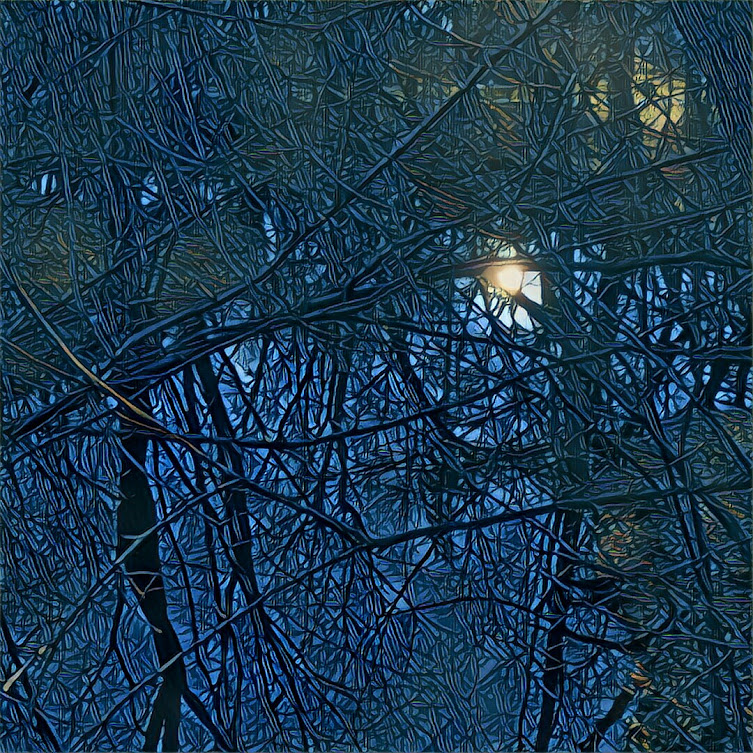In times gone, and maybe still in places where they pay attention, they call this one Queen of the May, under the protection of the faeries.
Hawthorn has more charisma in one wild, twisty branch than does a whole hillside of uniform cultivars.
Of all the varieties of hawthorn at the Arboretum, she was the only one to be blooming as early as the flowering crabs.
Of all the varieties of hawthorn at the Arboretum, she was the only one to be blooming as early as the flowering crabs.
Hawthorn's fragrance midway between narcotic sweetness and a whiff of fermenting flesh...but nonetheless (or maybe because of it) her branches were humming with small, darting wild bees and honeybees and syrphid flies, all dizzy with nectar amid the flowers and thorns.
Hawthorn marks the entrance to the Otherworld.
In the Old Lands, they told the tale:
On your life, do not cut down the sacred tree.
Take care to not interfere with the lone bush growing in the open, for a temper dwells within this tree.
Ask permission before gathering her flowers.
And leave an offering in return.
Hang the may boughs over doors and windows for protection from witches and Unseelie spirits...
Do not bring the blossoms inside! For ill luck or death may follow.†
(I have a witch sister who planted a hawthorn outside her kitchen window. But she was disconcerted by the flowers' heady, sweet-decomposing scent, and later removed the tree.
I wonder, did she ask permission? Hawthorns seem unusually testy. See their thorns, up to four inches long....)
I wonder, did she ask permission? Hawthorns seem unusually testy. See their thorns, up to four inches long....)
Hawthorns, genus crataegus, are cousins of apple trees and Juneberries within the large rose family.
Many thousands of years of lore and legend around hawthorns grew up like wild hedgerows in the Old World.
So many alien species did European immigrants bring to North America that one could be forgiven thinking that any hawthorn one finds in America must have originated elsewhere.
Whoever thinks that, I have discovered, would be mistaken. Because the royal family of hawthorns has for just as many centuries been native to North America, including seven species native to my northern region:
Many thousands of years of lore and legend around hawthorns grew up like wild hedgerows in the Old World.
So many alien species did European immigrants bring to North America that one could be forgiven thinking that any hawthorn one finds in America must have originated elsewhere.
Whoever thinks that, I have discovered, would be mistaken. Because the royal family of hawthorns has for just as many centuries been native to North America, including seven species native to my northern region:
- Dotted hawthorn (Crataegus punctata)
- Downy hawthorn (Crataegus mollis)
- Fanleaf hawthorn (Crataegus flabellata)
- Fireberry hawthorn (Crataegus chrysocarpa)
- Fleshy hawthorn (Crataegus succulenta)
- Pear hawthorn (Crataegus calpodendron)
- Red haw (Crataegus chrysocarpa var. chrysocarpa)
New World hawthorns seem to have grown a thorny history of their own, one unfamiliar to me. As remedy, in my stack of reading is Hawthorn: The Tree That Has Nourished, Healed, and Inspired Through the Ages, by Bill Vaughn, guardian to acres of wild hawthorns on his Montana property.
One day, perhaps at our new house, if we ever find it, I will plant hawthorns in my yard, and their fragrance shall be intertwined always with the unfolding, intensely mortal beauty of May.
With Faerie queens, storm-colored clouds, changeable skies and the luna moth of spring.
But for now, Juneberry, Witch Hazel, Pagoda Dogwood, Crabapple and Silver Maple are my everyday companions, and I must ramble with intention to see hawthorns, planted as ornamental trees in the parklands around my home.
No hedgerows, rag trees, or fairy bushes here.
But still, magic.
See now the small soft-feathered mother, American Robin, who has made her nest amid a bower of hawthorn's protective thorns; where the flowers will soon flutter to the ground and the tree will set fruit, growing red haws beloved of thrushes and waxwings. Which they shall eat and then plant without even knowing that they do, so that in the way of kinship, more hawthorns can protect more robins.
†"A widespread belief in Ireland, and elsewhere, was that hawthorn blossom was unlucky. A recent survey carried out by the Folklore Society in Britain found that hawthorn flowers were considered to be the most unlucky of plants, with death resulting if brought into a house. Recently it has been shown that a chemical present in the early stages of tissue decay is found in hawthorn blossoms, so perhaps an association with the smell of death is the cause." —Niall Mc Coitir, Irish Trees: Myths, Legends & Folklore, (c) 2003.










